Our second day in San Ignacio, we visited the
Actun Tunichil Muknal Cave. This was completely unlike anything we've done
before. It was 45 minute hike through the jungle to the cave
opening. We crossed the river three times before arriving at a picnic area
for lunch. Then it was time to put on our headlamps. To get into the cave,
we jumped into a 20-foot deep pool and swam across to a small beach inside the
cave. From there, we waded upstream in mostly knee-deep water. Five or six
times, the water was waist or neck deep. Most of the chambers we walked through
were relatively large, but there was also a lot of scrambling over rocks,
ducking below outcrops, and butt-scooting past small waterfalls. The guide
pointed out underwater rocks to avoid, as well as active cave formations:
stalactites, flowstone, and curtains.
Eventually, we reached a 10 foot tall rock
that our guide called a "Mayan elevator" (translation: climb up this rock
to get to the dry part of the cave). Then we took off our shoes; the guide
said that would make us pay attention to where we stepped. The Maya used
this cave for rituals, and there was pottery everywhere. There were also
several Mayan skeletons, probably sacrificial victims. Finally, we climbed
up a 15 foot ladder, and scrambled into a chamber containing one last skeleton.
When we asked about the trip at Eva's (a major source of information for San
Ignacio, as well as a restaurant/bar), the guy had us come over to the computer,
where he looked something up on Google. Then he showed us this
slideshow. This has some great
pictures we didn't get because of camera battery issues.
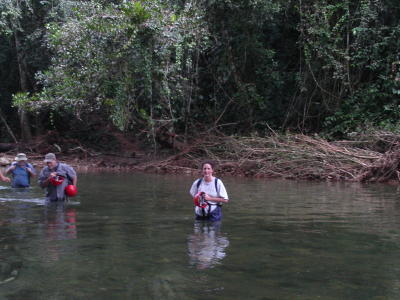
Kimberly crossining the stream the first of three times on the way to the cave.
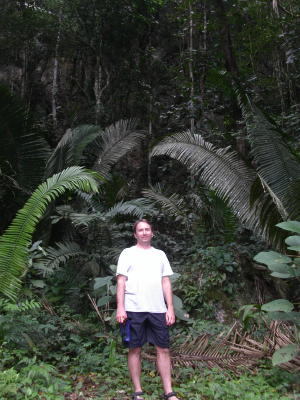
The hill behind Paul goes almost straight up, but is almost completely covered with plants.
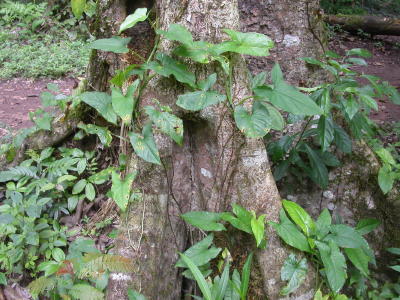
The jungle was incredibly lush.
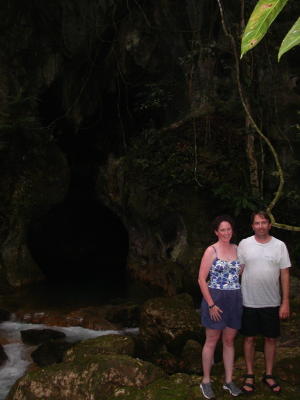
We're about to go into the cave -- the entrance is just behind us.
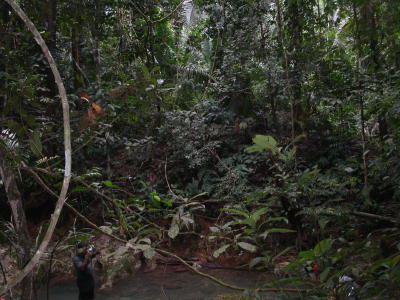
Looking across the river just outside the cave entrance. Our guide is taking pictures of the rest of our group.
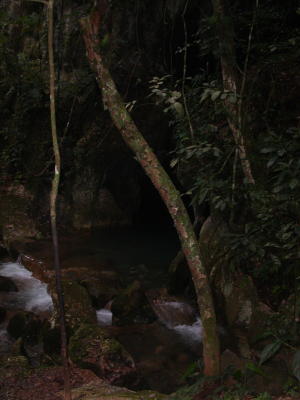
We walked across the top of these rocks before jumping into the deep pool at the cave entrance.
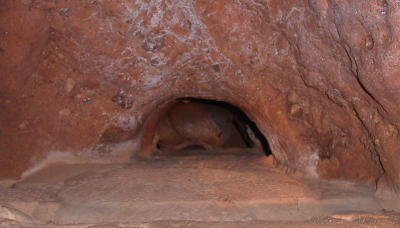
This pot was hidden deep in a crevice; we were glad it was far away when we noticed the giant spider on it.
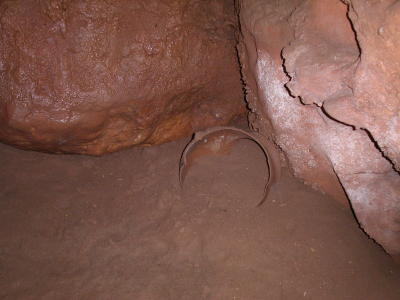
According to our guide, the Maya broke the pots as part of the rituals they were performing in the cave.
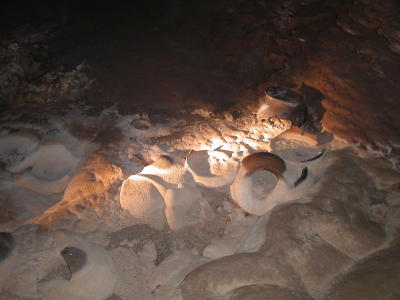
After more than 1,000 years, some of the pots have become cemented into the floor of the cave.
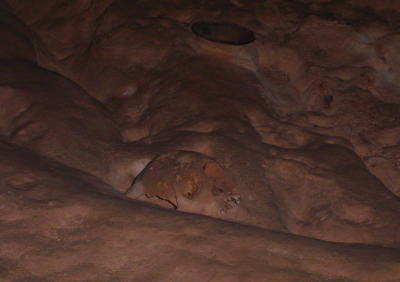
This is the first of several skeletons we saw in the cave. Amazingly, we could walk right up to it; we were standing about a foot away. The skull is flattened at the top, which the Maya thought was beautiful. The Maya tied boards to their babies' heads to achieve this look.
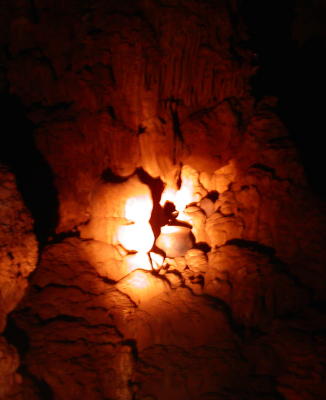
There were pots high up in niches as well as all over the floor.
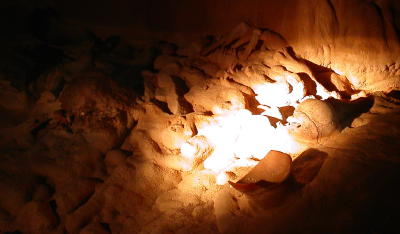
Most of the bones from this skeleton have calcified and are now cemented into the floor.
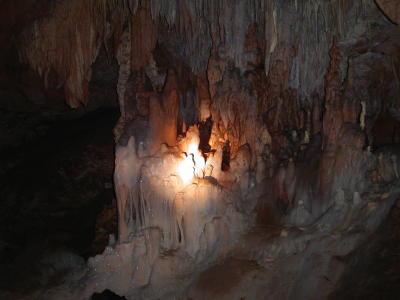
Some of the cave features had been altered by the Maya; archeaologists aren't sure why.
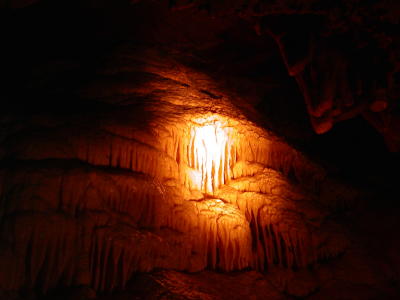
These curtains are still growing, but very slowly.
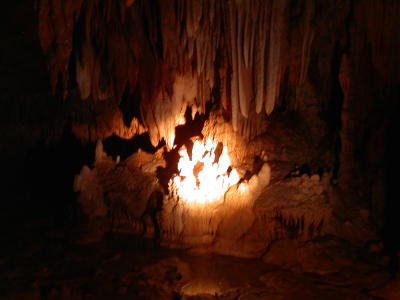
We were all wearing head lamps, but our guide also had a big light that could illuminate cave features across the big chambers.
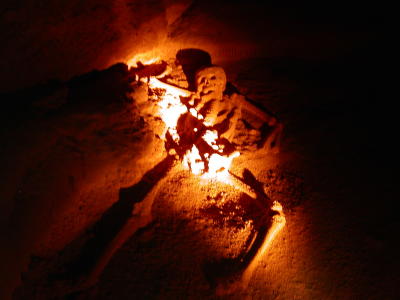
We climbed up a big ladder barefoot to get the the chamber containing the "crystal maiden." She was probably about 20 years old. Archaeologists aren't sure if she was a sacrificial victim or if she was brought here after death. After two hours wading, swimming, scrambling, and climbing into the cave, the guide asked us what we thought: did someone carry her body, or did she get here under her own power?
















